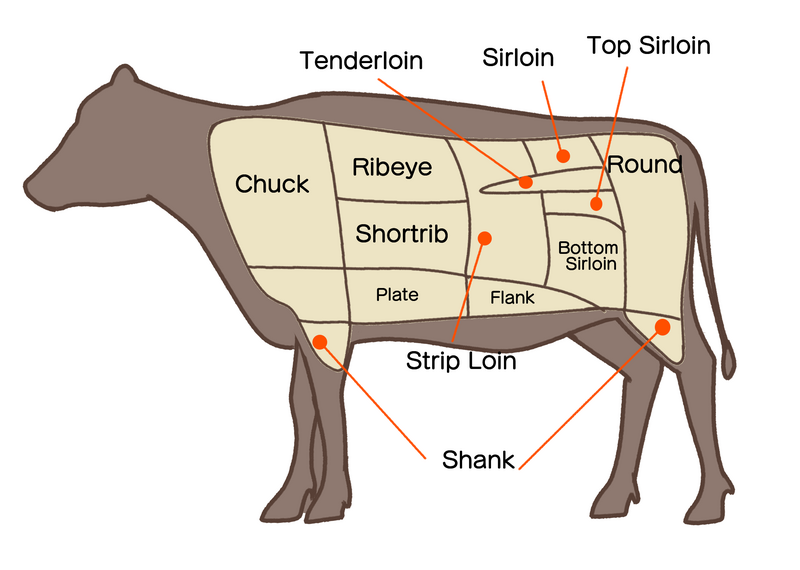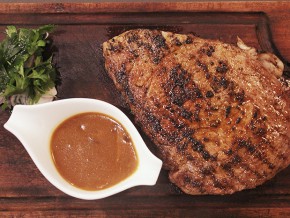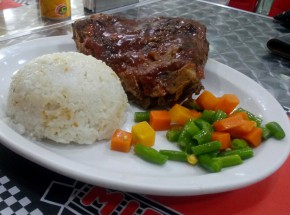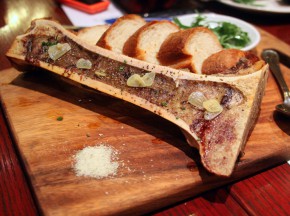Steakhouse
This time, Philippine Primer is serving up a sizzling feature on the best steakhouses in the Metro. If you’re looking to splurge, you’ll find in-depth reviews on high-end spots like CRU, where European flavors reign supreme, I’m Angus Steakhouse, known for its classic cuts, and Flame, which offers a contemporary twist on traditional steak dishes.
Read more ∨Close ∧
Cuts of Deliciousness
IMAGE from Philippine Primer
Understanding different cuts of beef can improve your cooking and dining experience, as each cut offers different flavors and textures as well as best preparation methods. Here are brief descriptions of some of the most popular meat cuts and how to prepare them accordingly.
Ribeye: this is cut from the rib section and is known for its rich marbling, which provides exceptional flavor and tenderness. It is often enjoyed grilled or pan-seared, making it a favorite among steak lovers. The marbling melts during cooking, enhancing the beef’s juiciness and making each bite succulent.
Tenderloin: it comes from the loin section and is prized for its tenderness. It has a buttery texture and a mild flavor. This cut is best suited for quick, high-heat cooking methods like grilling or pan-searing.
Sirloin: Sirloin is a beef cut from the rear back portion of the cow, offering a good balance of flavor and tenderness. It can be divided into top sirloin and bottom sirloin, with the top sirloin being more tender. The sirloin is ideal for grilling, roasting, or broiling.
T-Bone: The T-bone steak is a T-shaped bone with meat on both sides that combines two cuts: tenderloin and strip steak. It boasts the tenderness of the filet and the flavor of the strip, which makes this cut ideal for grilling. The bone (and marrow!) adds extra flavor to boot.
Strip Steak: also known as the New York strip, the strip steak comes from the short loin and is known for its richness and firmness. It has moderate marbling, which provides a good balance between tenderness and flavor. This cut is ideal for grilling, broiling, or pan-searing.
Flank steak: this is cut from the abdominal muscles of the cow and is known for its gaminess. It is relatively lean and benefits from marinating to enhance tenderness. Best cooked quickly over high heat and sliced against the grain, it’s ideal for dishes like fajitas and stir-fries.
Brisket: it comes from the lower chest and is a tougher cut that’s prepared using slow cooking methods like braising or smoking. It has a rich, hearty flavor and becomes incredibly tender when cooked low and slow. This is a staple in barbecue cuisine and is also used in corned beef.
Chuck: this cut comes from the shoulder of the cow and is known for its rich flavor and versatility. It contains more connective tissue, which makes it ideal for slow cooking methods like braising or stewing. When cooked properly, it becomes very tender and flavorful, perfect for pot roasts and stews.
Shank: the shank comes from the leg portion of the cow, specifically the lower part of the animal. It is a tough cut of meat with a lot of connective tissue, which makes it ideal for slow cooking methods like braising. When cooked slowly, the shank becomes tender and flavorful, and it’s often used to make dishes like osso buco and beef broth due to its rich, gelatinous texture.
Plate: the plate cut is found near the cow’s belly, just below the ribs. It is known for its relatively high fat content, which makes it flavorful but also requires careful cooking to render the fat properly. This cut is often to make short ribs bbq, skirt steak, and beef bacon, and it’s also a key ingredient in ground beef and carne asada due to its richness and marbling.
Meat Doneness
IMAGE from Santis Delicatessen
When it comes to steak, the level of doneness refers to how thoroughly the meat is cooked which impacts the texture, flavor, and juiciness. Understanding the different levels of doneness can help you cook (or order) the perfect steak to your liking. Here’s a breakdown of the temperatures:
Rare: Rare steak is seared on the outside but remains mostly red and cool on the inside. The internal temperature is around 120-125°F (49-52°C). This level of doneness preserves the natural juices and flavors of the meat, making it tender and juicy. It’s best for those who enjoy a more raw texture and a stronger gaminess.
Medium Rare: Medium rare steak is seared outside with a warm, red center. The internal temperature is about 130-135°F (54-57°C). This doneness is often recommended by chefs because it retains the meat’s tenderness and juiciness while offering a slightly firmer texture than rare. It’s ideal for enjoying the full, rich flavor of the beef without being too raw.
Medium: it has a warm pink center, with an internal temperature of 140-145°F (60-63°C). At this level, the meat starts to lose some of its juiciness and becomes firmer. It’s a popular choice for those who want a balance between tenderness and a more cooked texture. The flavor is still good, but with a bit more chew.
Medium Well: Medium well steak has a mostly brown center with just a hint of pink, and the internal temperature is around 150-155°F (66-68°C). The meat becomes firmer and less juicy. It’s for those who prefer a more cooked and less bloody steak, while still retaining some moisture and tenderness. The flavor is more robust, though slightly less tender.
Well Done: this is cooked through with no pink remaining, reaching an internal temperature of 160°F (71°C) or higher. The meat is firm and has a more uniform brown color throughout. This doneness level is preferred by those who don’t want any trace of red in their meat. However, it can be less juicy and tender, with a chewier texture.



























